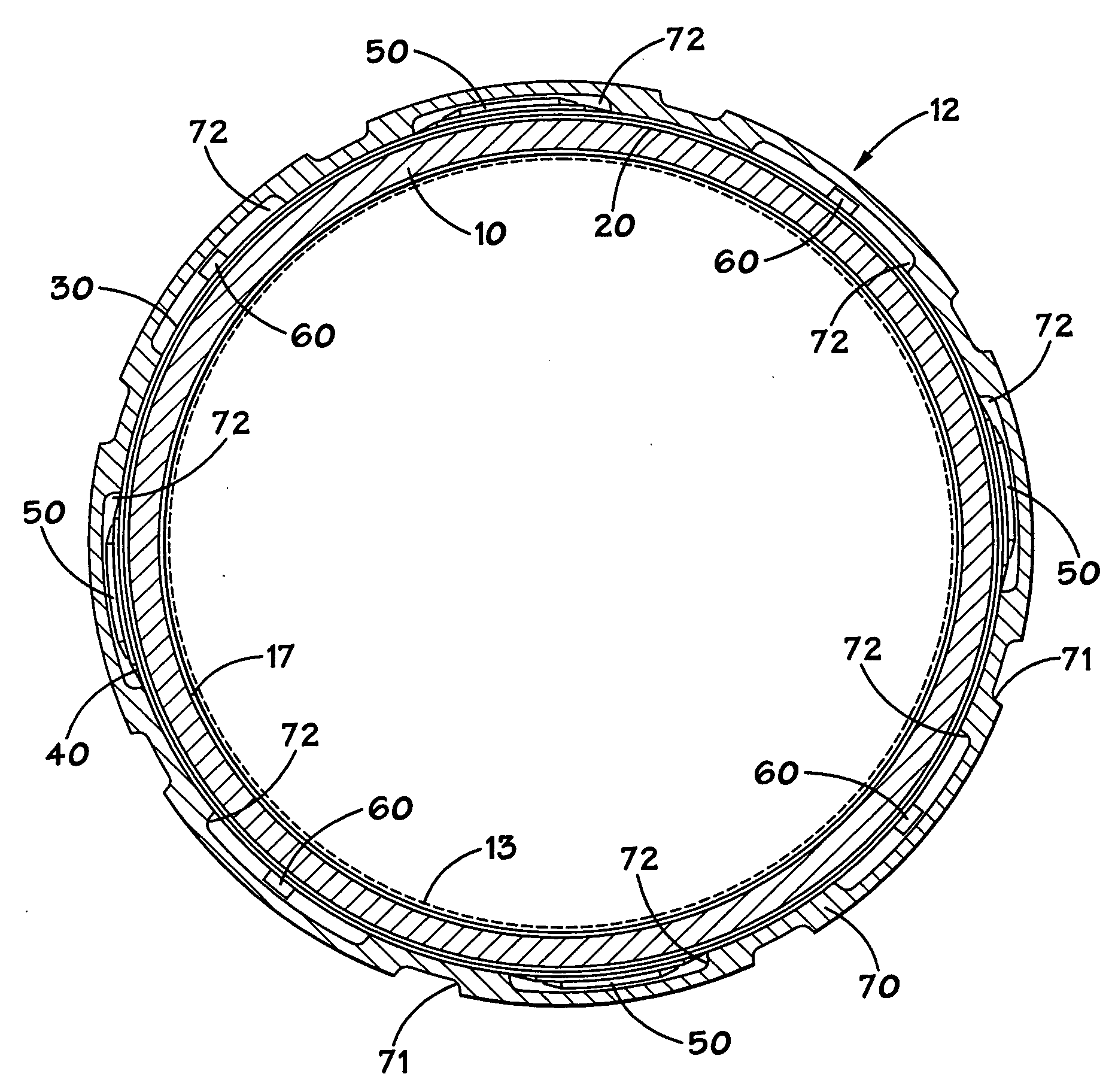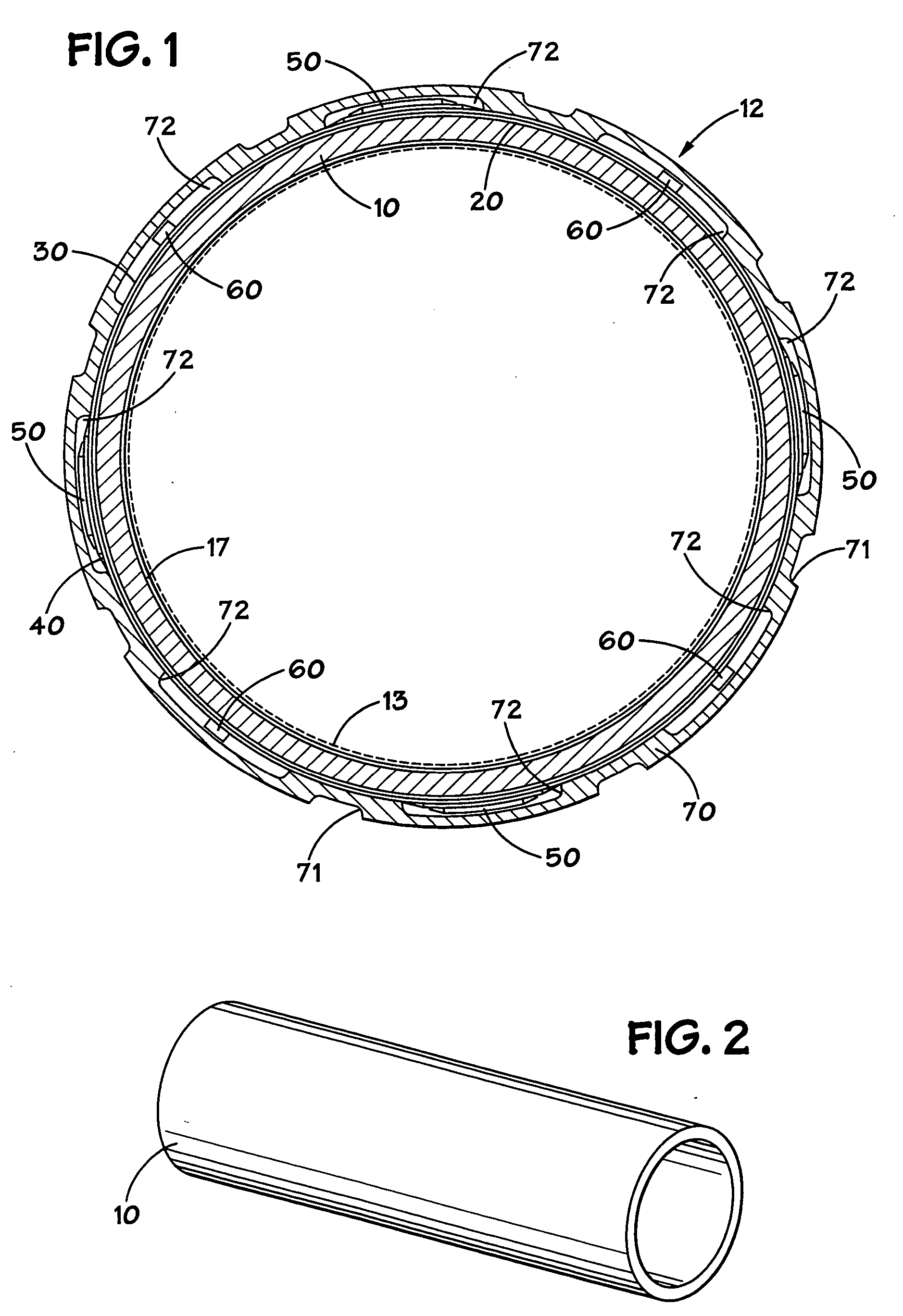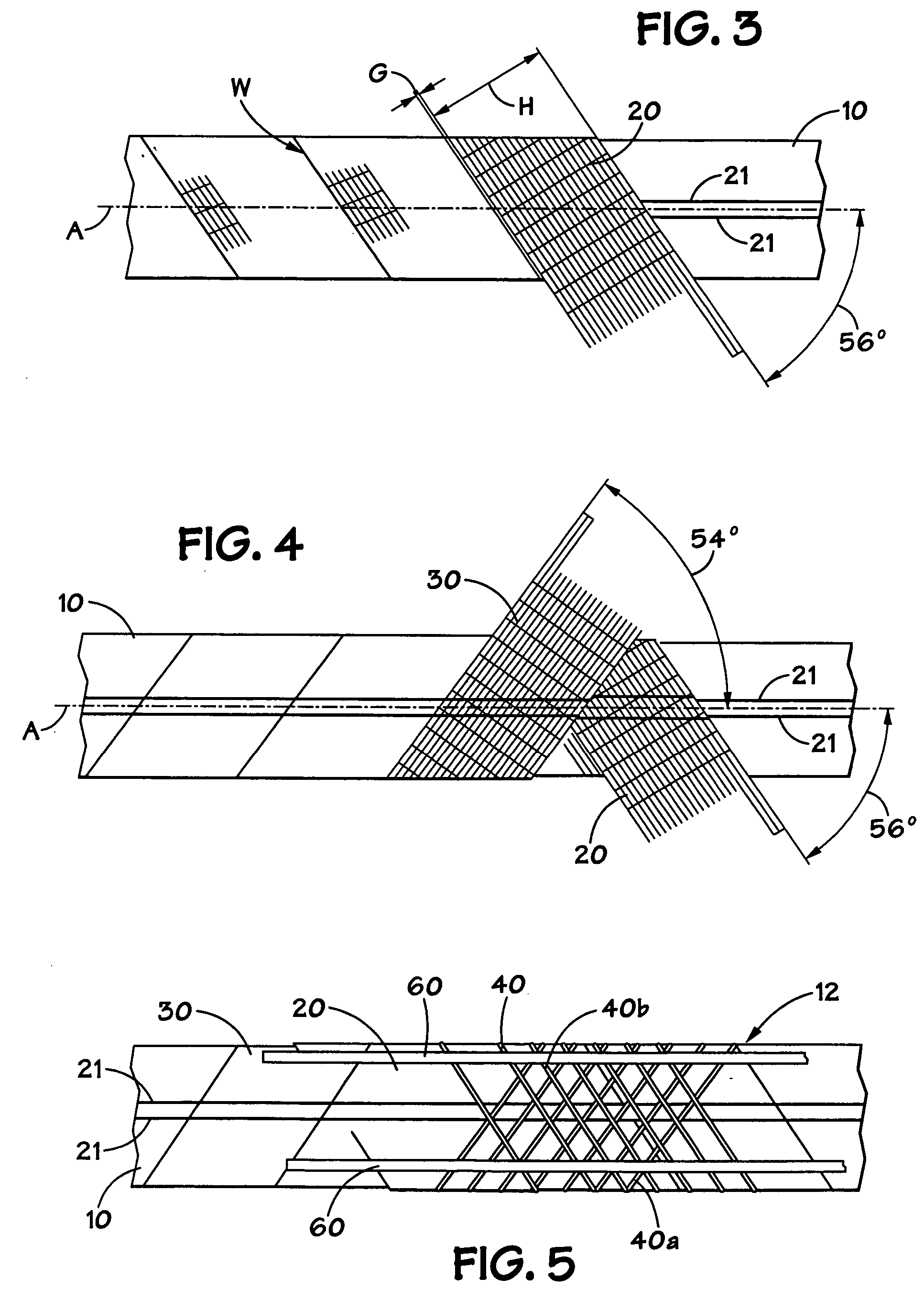However, with the
population growing throughout the world and the necessity for transporting liquids and gases to more locations increases, the continued utilization of such
metal articles has become more and more difficult for a number of reasons.
Such off-site production can require transport of cumbersome
metal articles to an installation location and then subsequent placement into already-dug channels.
These procedures can be difficult to follow since metal articles are rather heavy and must be connected together to form the desired pipeline.
Additionally, in order to reduce the number of connections between individual pipes, longer metal pipes could be formed, which adds to the complexity with an increase in required welded connections.
Further problems associated with metal pipes and tubes include the potential for internal and external
corrosion (which may contaminate the transported liquid or gas), the low threshold of earth-shifting resistance which could cause a break within the pipeline, and the difficulty in replacing worn out metal pipes in sections, again due to the metal pipe weight, metal pipe length, and connection welds.
These problems have proven to be extremely troublesome in certain geographic areas which are is susceptible to earthquakes and tremors on a regular basis.
When unexpected earthquakes have occurred in the past, the metal gas and liquid pipelines have not proven to be flexible enough to withstand the shear forces applied thereto and explosions, leaks, or discontinued supplies to such areas have resulted.
Furthermore, although such metal pipes are designed to withstand such high pressures (e.g. above 80 bars) once a crack develops within the actual metal pipe structure, it has been found that such cracks easily propagate and spread in size and possibly number upon the application of continued
high pressure to the same weakened area.
In such an instance, failure of the pipe is therefore imminent unless closure is effectuated and repairs or replacements are undertaken.
Unexpected explosions have occurred with tragic consequences.
Some of these older pipelines were constructed in what were rural areas but are now heavily populated urban areas, thus increasing the risk associated with a failure.
In heavily populated areas, the dig and replace method becomes extremely difficult, inconvenient and costly.
However, the
resultant articles do not include specific fabric reinforcements (they are fibers wound around specific
layers of plastic material) and thus are difficult and rather costly to produce.
Furthermore, such
fiber-wound materials often cannot be easily produced at the pipe installation site due to the complexity of creating
fiber-wound reinforcement articles subsequent to
thermoplastic or thermosetting layer production.
Additionally, with off-site production, transport and in-ground placement can be a difficult problem.
Thus, although some improvements have been provided in the past in relation and in comparison to metal pipes and tubes, there simply is no viable alternative presented to date within the pertinent prior art known to the present inventor which accords the underground liquid and gas transport industry a manner of replacing or restoring such
high pressure metal articles.
Pipe liners typically do not restore the operating parameters of a pipeline.
CIPP liners are designed to
resist only the installation forces and typically do not contribute, or add significantly to, to the strength of the host pipeline.
Further they generally do not provide protection against external
corrosion.
The use of such pipe liners is well documented in the industry literature and is not applicable to the high-pressure applications.
Limitations of this type of product are that it relies on the strength of a host pipeline to
resist operating stresses; it has limited tensile strength and can therefore be pulled into a host pipeline only in relatively short lengths, usually one
mile or less; and it cannot provide protection against external
corrosion.
A further limitation of this type of product is the ability of fluids to permeate through the wall.
Such expansion, often results in a buckling of the pipe liner called “liner collapse”.
This pipe and method of installation can provide increased pipeline pressure rating and increased internal and external corrosion resistance, but can result in a significant reduction in the effective inside
diameter of the host pipe.
This results in an increase in pipeline operating costs.
An additional significant limitation of this product is the difficulty of
road transport of rigid spoolable pipe sizes greater than about four inches in
diameter in sufficient continuous length to be cost effective (see, e.g. U.S. Pat. Nos. 3,769,127; 4,053,343, 5,755,266; 5,828,003 and 6,065,540).
This relatively flexible, yet rigid, pipe and method can provide increased pipeline pressure rating and increased internal and external corrosion resistance, but can result in a significant reduction in the effective inside
diameter of the host pipe, and in increased pipeline operating costs.
Another limitation of this method is the difficulty of
road transport of rigid pipe sizes greater than about four inches in diameter in sufficient continuous length to be cost effective (see, e.g. U.S. Pat. Nos. 2,502,638; 4,000,759; 4,384,595; 5,072,622; and 6,305,423).
 Login to View More
Login to View More  Login to View More
Login to View More 


